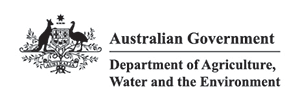Making precision viticulture a practical reality

This project is supported by funding from the Australian Government Department of Agriculture, Water and the Environment as part of its Rural R&D for Profit programme.
The timing was just right – for at least three reasons – to launch the CSIRO’s project designed to make the techniques and technologies of precision viticulture more accessible and feasible for general use.
The first was the increasing availability of freeware Geographic Information Systems (GIS) packages with quite sophisticated functionality. (GIS is software used to map and analyse spatial data, like remotely sensed imagery or yield maps). The second was a greater awareness in the sector of the value of spatial data, and mapping in general. The third was the opportunity to access funding through the Australian Government’s Department of Agriculture, Water and the Environment's Rural R&D for Profit programme, which was set up to finance just such an innovative project as this.

It is being led by Dr Rob Bramley, a Senior Principal Research Scientist in CSIRO’s Integrated Agricultural Systems program in Adelaide, who with colleagues has been involved with detailed vineyard variability research for nearly 20 years.
Unfortunately, albeit not surprisingly, they have been using a large GIS package that is very good but also pretty expensive as a key platform for their research. It’s OK for a major research institution, but rather out of reach for all but the largest of wine businesses (and even then, Dr Bramley is only aware of one that does own it).
‘It dawned on us that the biggest impediment to the adoption of what we’d been doing as researchers is exactly that; some of the key data processing tools we use are expensive,’ he said. ‘Over the years we’ve developed lots of tools and shortcuts, but because they are embedded within the system we use they aren’t available to anyone else.’
That is about to change, thanks largely to the work of CSIRO spatial analyst David Gobbett and GIS software programmer Christina Ratcliff, who was recruited to be part of the 30-month project that began last July.
The brief for the first part of the project is to identify the best available freeware platform to support the spatial analyses and map displays that underpin precision viticulture (that bit has been completed, and the choice is QGIS) and then convert the CSIRO’s spatial analysis tools to a format that is implementable on that platform.
This is being done using a programming language called Python, and will lead to the creation of a Python Library that could sit on a server or in the Cloud. Download QGIS, and with a little bit of training you’ll be able to access the entire Library.
The second part of the project is focused specifically on the complex geostatistical analysis that underpins spatially distributed experimentation, again with the idea of simplifying the tools so they are available to non-expert users.
‘Over the years, we’ve been interested in a new way of conducting experiments whereby instead of doing things in little plots, you use a whole management unit as the experimental unit and then use some methods of spatial analysis to analyse the results,’ Dr Bramley said.
‘The reason that that’s an attractive way of doing experiments is that whereas the traditional approach basically sought to find out whether treatment A is better than treatment B, this approach uses the variability in the vineyard as an experimental tool; so, you end up with a situation where treatment A and B might both deliver benefit, albeit in different parts of the vineyard.’
‘The other attractive element of this approach is that it enables experiments to be laid out at a scale that is meaningful to vineyard managers, very often using their own equipment, something that adds greatly to the believability of the results obtained.’
While the work is supported by Wine Australia and has a vineyard focus, the results will be applicable to almost any cropping industry. Dr Bramley also hopes it will encourage the establishment of specialist consultants able to offer cost-effective services to wineries that prefer to outsource.
He says no-one should fear working with GIS, suggesting it’s really no different to Excel – you don’t have to understand how it works to use it. However, there is going to be a learning curve.
‘No-one would suggest that just because of this project suddenly, bang, everyone’s going to be able to do what we do, but at least we’re making it very much easier and financially more feasible to do so than it used to be.’